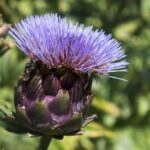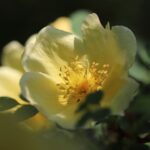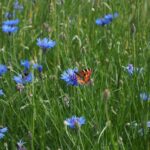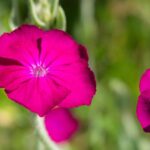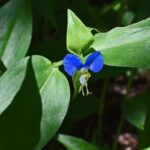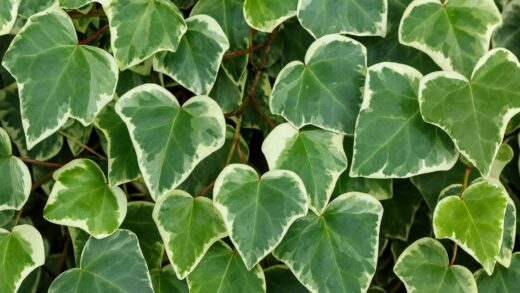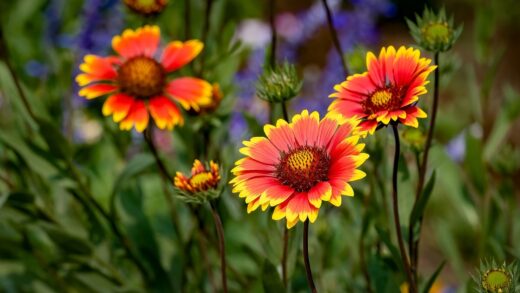Freesia, this fragrant flowering plant originating from South Africa, is particularly sensitive to light conditions, which fundamentally determine its growth, development, and, most importantly, its flowering. Light energy is indispensable for photosynthesis, the process by which the plant converts carbon dioxide and water into organic substances, primarily sugars, thereby ensuring its own energy supply. These organic substances form the basis for building the plant body and provide energy for all physiological processes, including the development of an abundant and healthy inflorescence. Chlorophyll, the green pigment in the leaves, plays a key role in absorbing light energy; therefore, adequate illumination is a fundamental prerequisite for the healthy development of freesia.
Light is not only the engine of photosynthesis but also significantly influences freesia’s hormonal balance and the regulation of its development. The intensity and duration of illumination affect the level and activity of plant hormones such as auxins, gibberellins, and cytokinins. These hormones are responsible, among other things, for cell elongation, shoot growth, flowering induction, and corm development. Optimal light conditions ensure the harmonious functioning of these complex hormonal regulatory systems, while a lack of light or excessively strong light can create a stressful situation for the plant, disrupting this delicate balance and negatively affecting flower quality.
Adequate light supply during the growing season is of paramount importance for the development of freesia corms and for the flowering potential in the following year. A significant portion of the assimilates produced by the leaves is stored in the corms in the form of starch, which serves as a vital source of reserve nutrients. These stored nutrients ensure the plant’s survival during the dormant period and provide sufficient energy for sprouting the following spring, the development of new shoots and leaves, and ultimately, for abundant flowering. If the plant does not receive enough light during the growth period, the corms may remain smaller and weaker, thereby reducing the flower yield in the next season and the overall vitality of the plant.
Although the primary and best-known role of light is related to photosynthesis, it also indirectly influences freesia’s water management and the process of transpiration. Transpiration is the evaporation of water through the plant’s leaves, a process that cools the plant and promotes the transport of nutrients from the roots to the leaves. Light stimulates the opening of stomata, the pores responsible for gas exchange, which are essential for the uptake of carbon dioxide necessary for photosynthesis. However, the plant also loses water through open stomata, so optimal light conditions help to strike a balance between efficient gas exchange and avoiding excessive water loss, contributing to the maintenance of the plant’s healthy state.
Optimal Light Conditions in Freesia Cultivation
For the successful cultivation of freesia, ensuring optimal light conditions is essential, which includes an appropriate light intensity and the necessary duration of daily illumination. Generally, freesia prefers bright, sunny locations but should be protected from direct, scorching sun, especially during the summer months. Ideally, it requires at least six hours of direct sunlight per day, but diffused light can also be suitable, particularly on south-facing windowsills or in greenhouses where light intensity can be better controlled. For inducing flowering and achieving an abundant flower yield, an adequate amount of light is a critical factor.
More articles on this topic
When selecting a cultivation site, special attention must be paid to the expected light supply. For outdoor cultivation, a bed should be chosen that receives sunlight for most of the day but may get partial shade in the afternoon from surrounding plants or structures. When grown in pots, the plant can be moved more easily, so it can always be placed in a location that meets its current needs. In greenhouse cultivation, in addition to orientation, the light transmission properties of the greenhouse material and the existence of any shading systems play an important role in optimizing light conditions, allowing for the creation of an ideal environment for freesia.
With the change of seasons, the amount and angle of incidence of natural light also change significantly, to which the cultivation practices for freesia must be adapted. In early spring, when the corms sprout and the plant begins intensive growth, and in autumn, during the period after flowering when the corms store nutrients, freesias try to utilize all available sunlight. In summer, however, especially during the hottest midday hours, excessive sunlight can damage the leaves and flowers, so slight shading or moving the plants to a more protected location may be necessary during this time to prevent scorching.
There can be fundamental differences in light requirements between outdoor and greenhouse cultivation, which the grower must take into account. Outdoors, plants are exposed to natural light conditions that are less controllable, so careful site selection is crucial. In contrast, greenhouses offer the possibility of more precise control over light conditions, including supplementary lighting during low-light periods or shading against excessive radiation. The greenhouse covering material (glass, foil, polycarbonate) also influences the amount and spectral composition of incoming light, which affects freesia development.
Direct Effects of Light Intensity on Freesia Growth and Flowering
Light intensity, or the strength of illumination, has a direct and decisive impact on freesia’s growth, habit, and flowering capacity. With appropriately high, but not excessive, light intensity, the plant’s photosynthetic activity is optimal, resulting in vigorous vegetative growth, thick, resilient stems, and brightly colored, large flowers. Freesias grown under such conditions are generally lusher, more compact, and more resistant to diseases. However, excessively strong, scorching sunlight, especially when combined with high ambient temperatures, can cause serious damage: leaves can burn, flowers can fade, and the plant’s overall stress state can worsen, leading to a shortening of the flowering period.
More articles on this topic
Conversely, low light intensity has numerous negative consequences for freesia. Under low-light conditions, the plant “searches for light,” leading to the elongation and thinning of shoots; this phenomenon is called etiolation. The leaves may be smaller, pale green, or even yellowish due to reduced chlorophyll production. Such plants are weaker, less resistant to pathogens and pests, and flowering is often absent or, if it does occur, the number of flowers is small, their size is reduced, and the flower stems are weak, unable to support the flower heads.
Light intensity plays a key role in the process of flower induction and the full development of flowers, although freesia flowering is primarily regulated by temperature factors (cold treatment) and photoperiod. Adequate light intensity provides the energy necessary for the differentiation of flower buds and their optimal development. If the plant does not receive enough light during critical developmental stages, flower formation can be inhibited, or the quality of the resulting inflorescence can be significantly below expectations. Abundant, high-quality light contributes to the intensity of flower colors and their longevity.
It is important to note that while there are general guidelines for freesia’s light requirements, there can be differences in light intensity tolerance among individual freesia varieties and cultivated hybrids. Some varieties, especially those accustomed to shadier conditions in their native habitats, may tolerate less sunny conditions better, while other modern varieties bred for cut flowers may have particularly high light requirements to achieve maximum yield and quality. For successful cultivation, it is therefore advisable to inquire about the specific needs of the chosen freesia variety and adapt the growing environment accordingly.
The Importance of Light Quality and Photoperiod
In addition to light intensity, light quality, meaning its spectral composition, also plays an important role in freesia’s physiological processes. Not all wavelengths of light are equally usable by plants. From the perspective of photosynthesis, the blue (approximately 400-500 nm) and red (approximately 600-700 nm) regions of the visible light spectrum are the most effective. Blue light typically promotes vegetative growth, leaf development, and a compact plant form, while red light is crucial for inducing flowering and stem elongation. Freesia, like all green plants, reacts sensitively to the spectral distribution of light; therefore, when designing artificial lighting, this aspect must also be considered.
Photoperiodism, the biological response of plants to the relative length of days and nights, is also a decisive factor in regulating freesia flowering. Freesia is generally considered a long-day plant in terms of flowering, meaning that for flower formation and development, it requires an increase in the duration of the illumination period after a preceding cold treatment (vernalization) period. Under natural conditions, this corresponds to the spring and early summer period when days gradually become longer. Knowledge of this is essential for timing cultivation.
In greenhouse cultivation, day length can be artificially manipulated, allowing for precise timing of freesia flowering, even outside the natural season. Supplementary lighting is used to extend days, while blackout screens or foils are used to shorten days. With this technique, cut freesia growers can programmatically flower their crops according to market demands, ensuring a continuous supply. Photoperiod manipulation is particularly important in large-scale commercial freesia cultivation.
Numerous scientific studies have investigated freesia’s photoperiodic sensitivity, confirming that after appropriate temperature treatment (usually a few weeks of cooling), long-day conditions significantly promote and accelerate flowering. These studies have refined the required number of light hours and the optimal level of light intensity for different varieties. The results have contributed to refining cultivation technologies, increasing flower yield, and improving flower quality. However, it is important to know that different freesia varieties may respond differently to photoperiod, so cultivation protocols should always be adapted to the needs of the specific variety.
Symptoms of Inadequate Light Supply and Their Management
For the healthy development of freesia, an adequate quantity and quality of light are essential, so a lack of light quickly causes noticeable symptoms on the plant. If freesia does not receive enough light, its leaves typically turn pale green, or in more severe cases, yellowish, as chlorophyll production decreases. The plant’s shoots elongate, become thin and weak, as the plant “stretches” towards the light source; this phenomenon is called etiolation. The size of the leaves may also remain smaller than normal, and the entire plant may appear stunted and weak, which can lead to the absence of flowering or a poor-quality inflorescence with few flowers.
Excessive light, especially strong, direct sunlight, can also be harmful to freesia and cause characteristic symptoms, so-called sunburn. Irregular, light brown or whitened, later desiccated spots may appear on the leaves in areas exposed to the strongest radiation. In severe cases, the entire leaf may dry out. The color of the flowers may fade, the petal edges may turn brown, and the plant may show general wilting symptoms due to increased water loss and tissue damage. To prevent this, scorching midday sun should be avoided, or if necessary, shading should be provided, especially in greenhouses and in warm climates.
Early recognition of problems related to light supply and taking appropriate corrective measures are crucial for maintaining freesia’s health and successful flowering. If symptoms of light deficiency are observed, the plant should be gradually moved to a brighter location, or if this is not possible, supplementary lighting with plant grow lamps can be considered. In case of scorching caused by excessive light, shading should be provided immediately, or the plant should be moved to a less sunny, but still bright, location. It is important to avoid sudden changes in light conditions, as this can also cause stress to the plant.
It is important to understand that inadequate light conditions can often interact with other abiotic stress factors, such as suboptimal temperature, excessive or insufficient water supply, or nutrient deficiency, further worsening the plant’s condition. A weakened, stressed plant becomes more susceptible to various diseases and pest attacks. Therefore, when diagnosing and treating light-related problems, it is always worthwhile to comprehensively assess the entire growing environment and optimize all factors to provide freesia with the best possible conditions for harmonious development and abundant flowering.
The Use of Artificial Lighting in Freesia Cultivation
During the winter months, when the quantity and intensity of natural light decrease significantly, especially at higher latitudes in the northern hemisphere, the use of artificial supplementary lighting can become indispensable for the successful, scheduled cultivation of freesia. The purpose of supplementary lighting is to augment the daily amount of light so that plants receive enough energy for photosynthesis, and to regulate the photoperiod for flower induction. In low-light growing spaces, such as interiors or poorly oriented greenhouses, artificial light sources may be necessary throughout the year to ensure optimal freesia development.
Various types of plant grow lamps are used in freesia cultivation, among which the most common are high-pressure sodium (HPS) lamps and the more modern, increasingly popular LED (light-emitting diode) lamps. HPS lamps emit a strong, yellowish-orange light and are relatively effective in stimulating flowering, but they also generate considerable heat. In contrast, LED technology allows for precise adjustment of the emitted light spectrum according to the plant’s needs, their energy efficiency is higher, their lifespan is longer, and they produce less heat, which reduces ventilation requirements.
Correctly setting the duration and intensity of artificial lighting is crucial for the successful cultivation of freesia. This must be adapted to freesia’s current developmental stage, the amount of natural light, the cultivation goal (e.g., early flowering), and the specific needs of the chosen variety. Generally, during the vegetative growth phase, light with a bluer spectrum is preferable, while for promoting flowering, light with a redder spectrum is more beneficial. When regulating the photoperiod, freesia’s long-day requirement for flower induction must be considered, so the duration of illumination should be adjusted accordingly, typically by supplementing natural light to 12-16 hours per day.
When designing and operating artificial lighting systems, cost-effectiveness and environmental considerations also come to the forefront. Although the initial investment cost of LED lamps may be higher than that of traditional HPS systems, in the long run, they can offer a more economical solution due to lower energy consumption and longer lifespan. Additionally, through targeted spectrums and reduced heat generation, they contribute to more sustainable cultivation practices. The selection of the appropriate light source and system optimization can significantly influence the profitability of freesia cultivation and its environmental footprint.








